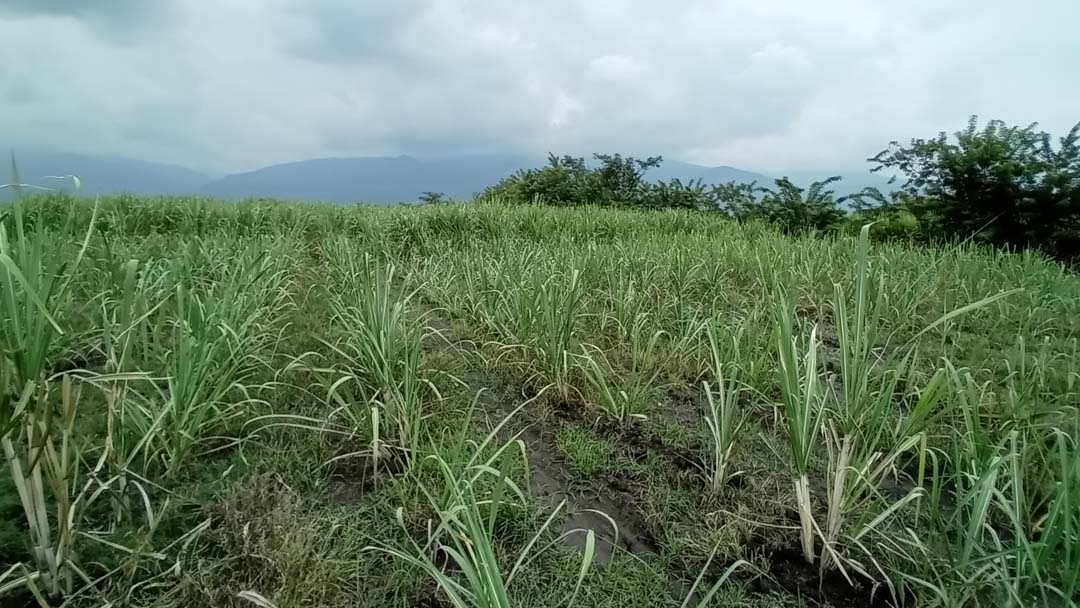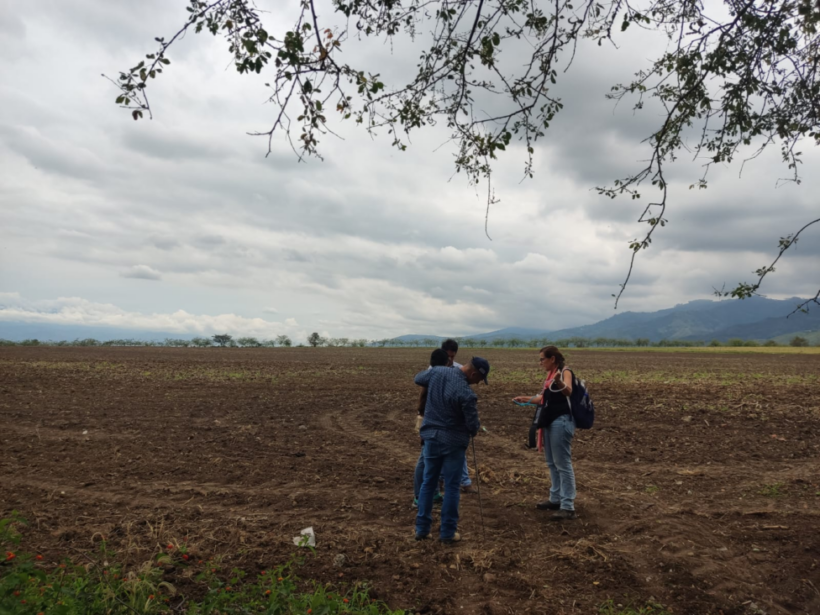In 1987, a well digging for water in Bourakébougou, a town north of Bamako, the capital of Mali, turned up a strange deposit. It was a dry well, but it emitted a gas. An unsuspecting worker peered into the borehole opening with a lit cigarette and an explosion burned his face and started a fire that raged for several days, journalist Eric Hand told Science magazine in February 2023.
By Andrés Díaz Páez
The well was closed and sealed with asphalt.
It took 25 years for it to reopen. In 2012, the company Hydroma (formerly Petroma) decided to explore what the gas emitted from the well was composed of: the results showed that it was 98% hydrogen, 1% nitrogen, and 1% methane. This natural deposit became the fuel for an electricity generator that today meets the demand in Bourakébougou.
Since then, companies such as Hydroma, which migrated from oil and methane gas to hydrogen, or new start-ups such as the US-based Natural Hydrogen Energy, are just examples of a growing number of organizations dedicated to exploring potential deposits of this element, which is already being called the new “white gold”.
Colombia does not want to be left behind. Three years ago, when the roadmap for hydrogen in the country was drawn up, Ecopetrol set a goal of producing one million tonnes per year by 2040, “intending to serve the local market and export to other countries”, the company told El Espectador. Entities such as the Colombian Geological Service (SGC) and the National Hydrocarbons Agency (ANH) are initiating exploratory studies to discover the potential of natural deposits in Colombia.
All this effort is already beginning to yield its first results: the country has indications of the presence of gas in large quantities, although it has not yet been confirmed that these are deposits.
A study published in the journal Geosciences in 2023, carried out with the support of the National University based on the work of Alejandra Carrillo, a geological engineer from that institution, reported the first evidence of natural hydrogen in Valle del Cauca, Colombia. In addition, the SGC also reported its first findings in the Eastern Plains. Why is this type of fuel special and how close is Colombia to exploiting it?
What is white hydrogen?
Hydrogen is a gas and is the most abundant chemical element in the universe. It is, in fact, the main fuel in the nuclear fusion process that occurs in the Sun and most stars, which causes them to emit light. On our planet, however, it is not easy to find in its free state. On Earth, it is combined with other elements, for example in water, which is made up of a molecule of two hydrogen atoms (H) and one oxygen atom (O).
Even so, hydrogen has been used as a fuel for many years. For it to do so, scientists have to separate the H molecule from the other molecules with which it is combined. Water is subjected to something called electrolysis, which is basically a chemical process that breaks water (H2O) into its components, hydrogen (H2) and oxygen (O2), by adding an atom to the latter. In its pure state, as a gas, it can already be used as a source of energy.
It can also be made from coal by heating it at high temperatures in the presence of water vapour and oxygen to produce a mixture of carbon monoxide (CO) and hydrogen (H2). Scientists then separate it from the carbon monoxide and obtain pure hydrogen.
So-called natural or white hydrogen is a gas that is ready to be used for energy production, without the need for polluting processes to obtain it.
In all these processes (and in some others), explains Paola Casallas, master’s degree in geology and technical director of hydrocarbons at the SGC, the objective is to “break the molecule in which the hydrogen is found in order to extract it”. Scientists have decided to name the process used for it to make this separation with colours. Brown is produced from coal, while grey is produced from methane gas.
Currently, about 99% of the world’s hydrogen production comes from fossil fuels, according to the International Energy Agency. The goals of net zero greenhouse gas emissions by 2050 (to which Colombia subscribed) imply moving away from the production of grey or black hydrogen, and looking for less polluting alternatives to do so.
It is in this scenario that the gas found by accident in Mali, West Africa, gains unexpected prominence. The gas that burned that worker and caused a fire is natural hydrogen, or white hydrogen, as scientists call it. It is the gas that is ready to be used in energy production, without the need for polluting processes to obtain it.
This gas “is formed underground, mostly by the interaction between water and rock,” explains Isabelle Moretti, PhD in geodynamics at the French University of Orsay. But it doesn’t just come out of any rock.
“What happens is that there are some geological environments that naturally release hydrogen in their natural processes by chemical reactions. They happen mostly in ultramafic rocks, i.e. rocks derived from the oceanic crust. It refers to rocks that are rich in minerals, mainly magnesium and iron. When that iron-rich rock comes into contact with water, the water oxidises the rock and hydrogen is released,” Casallas explains.
Science is still uncertain about the pressure levels, temperature and time it takes for this process to take place underground. But it is known that, if purity levels like those in Mali (98 %) are achieved after extraction, the hydrogen could be used without any process that generates polluting emissions. It would also be cheaper.
Moretti says that in Mali, the only deposit being exploited in the world, “it costs about 50 to 70 cents per kilogram”. By way of contrast, obtaining this gas from the electrolysis of renewable energies (a process that uses water and is called green hydrogen) costs seven or eight dollars per kilogram, while grey hydrogen is produced at two dollars per kilogram.
Other places where natural hydrogen wells have been found, such as Australia and Spain, are still in an exploratory phase and do not know if they will be able to exploit it commercially. The reason is that the tests must prove that the gas is stored in sufficient quantities and that it can remain there for several years, while the infrastructure to extract and commercialize it is being built. From the start of the exploratory process, this could take “about seven years”, Casallas says.
In Colombia, natural hydrogen is known to be present in the Cauca-Patía valley in Valle del Cauca, according to work published in Geosciences, and in a geological basin in the Eastern Plains, according to the SGC. “But this has to be taken with a pinch of salt because so far we are in an exploratory stage,” Casallas says.
Ecopetrol says it is “studying all the basins in the country where we have acquired data and where it is possible to take advantage of wells already drilled for subsurface sampling. The results show positive indicators for the Llanos Orientales, Putumayo, and lower Magdalena valley basins, although they are not yet conclusive in terms of volumes and economic variables”. These analyses are carried out in places where there have been or are oil and gas projects, something that the ANH is also starting to do.
All this “fever” for white gold has a big “but”: it could have come too late.
 In a sugar cane field in Valle del Cauca, Colombia, the plants do not grow to their usual height. This is thought to be due to the presence of hydrogen in the subsoil on which they are grown. Image: Courtesy Isabelle Moretti
In a sugar cane field in Valle del Cauca, Colombia, the plants do not grow to their usual height. This is thought to be due to the presence of hydrogen in the subsoil on which they are grown. Image: Courtesy Isabelle Moretti
The promise of hydrogen
First, it is worth asking ourselves what the energy produced with hydrogen is used for. According to the International Energy Agency (IEA) in its Global Hydrogen Review 2023, in 2022 demand for hydrogen was the highest ever recorded: 95 million tonnes. However, its use remained concentrated in energy sectors such as steel production or oil refining.
Hydrogen energy can be used for gas desulphurization or hydrocracking. Both processes are essential in the petrochemical industry to improve the quality of petroleum products, which accounts for most of the demand. This means that their use is linked to emissions of more than 900 million tonnes of carbon dioxide by 2022.
These energy sectors will, in theory, have disappeared or will be reduced to the minimum possible, according to the most optimistic scenarios and the global targets set for 2050.
What else, then, could hydrogen be used for? Other uses being explored as part of the energy transition include using it as a fuel for vehicles in charge, shipping and aviation. However, this still raises several concerns.
A UK clean energy and transport consultancy, Liebreich Associates, has designed a “clean hydrogen ladder” in which, based on available evidence, it ranks the sectors where it would be an irreplaceable fuel, making it worth developing from renewables or extracting naturally, and those where more efficient options are already being developed.
For example, in fertilizer production, hydrogen seems to be the most suitable option. Meanwhile, in other sectors, such as freight transport or steel production, electric batteries have proven to be more efficient and economical.
This outlook for the future poses risks that Colombia must take into account if it plans to invest in a hydrogen industry, says Nadia Combariza, Master of Environment and Resource Management at the University of Applied Sciences in Cologne, Germany, and co-founder of the Polen Corporation, a think tank that promotes a just energy transition in the country.
Germany is, in fact, one of the countries with the largest investment in Colombia for the development of biofuel projects. But, according to Combariza, the cost of transporting pure or transformed hydrogen produced in the country to Germany would be higher than producing it in Europe.
“In the future, there might not be the potential market that has been promised for this industry. And it turns out that law 1715 of 2014, and its subsequent amendments, states that up to 50% of investments in renewable energy projects can be incentivized through rent rebates. This means that we are not even going to receive rent from many of these projects in a fairly large initial period. How are we going to invest so much in an extremely risky industry,” Combariza points out.
There could be some risks, according to Combariza, because “in the future, there might not be the potential market that has been promised for this industry”.
Added to this are other challenges that have been identified to make the exploitation of natural hydrogen economically viable, such as its compression. So far, it is known that one kilogram of the extracted gas could occupy the entire tank of a tanker truck, which normally carries thousands of liters of gasoline. The problem is that one kilogram would produce the same energy as four liters of fossil fuel.
In industries such as aviation, work is underway to develop mechanisms to compress the hydrogen and successfully transport it in batteries that occupy similar spaces to those currently occupied by ACPM tanks. “At the moment it may not be economically viable. But in 10 years it may be, yes, because technology is evolving and fossil fuels are becoming scarcer and more expensive,” Casallas says.
However, for Combariza, this is a very high investment (12 billion dollars in clean hydrogen by 2030, according to the IEA) that could be used to develop or promote other technologies that have a more secure projection.
This article was prepared with the support of Climate Tracker Latin America.
VR: EG










